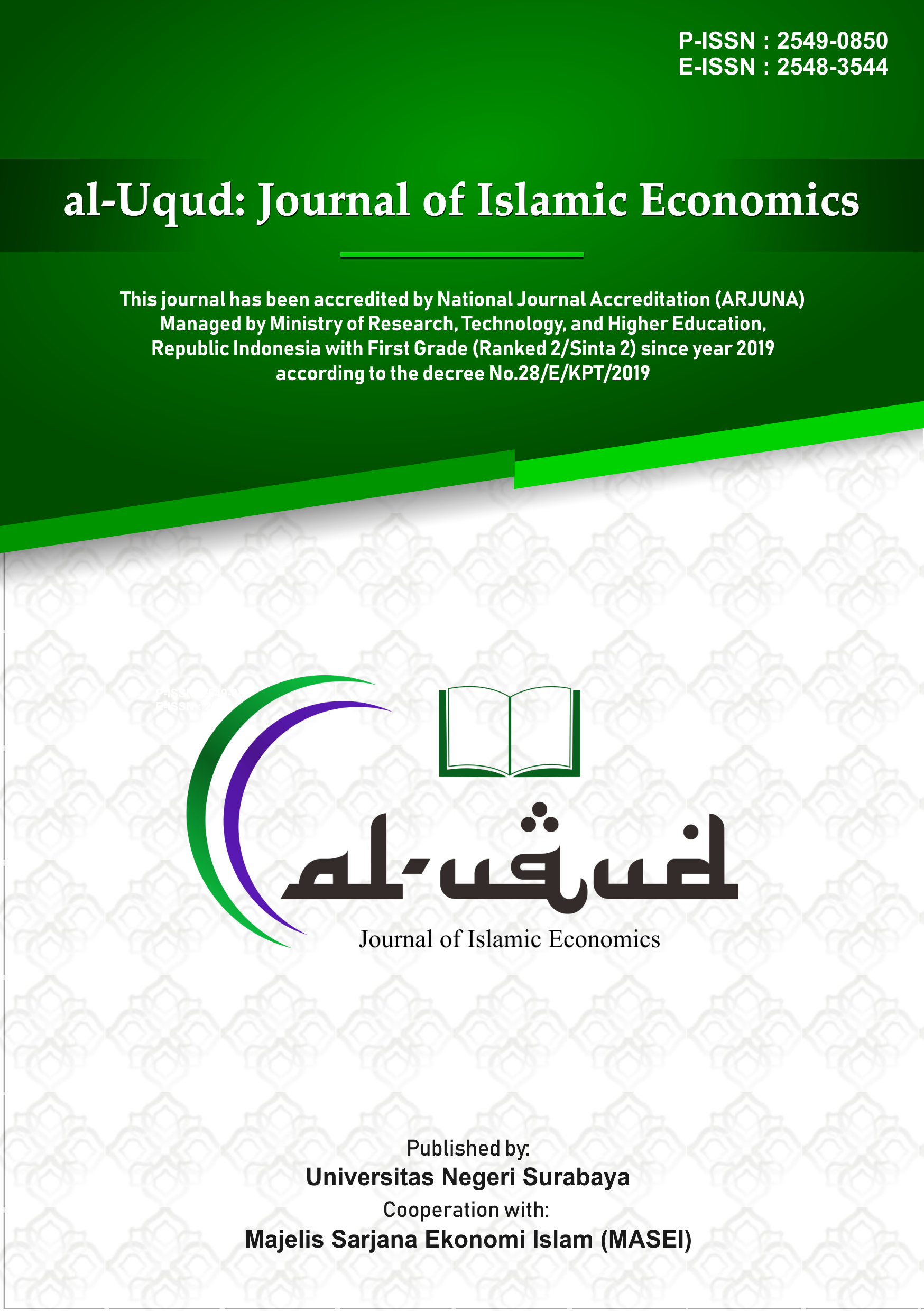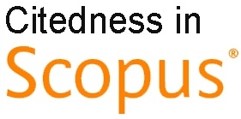Psychological attitudes of Indonesian millenials consumer to choose Islamic banking financing
DOI:
https://doi.org/10.26740/aluqud.v7n1.p67-81Keywords:
Millennials generation, Islamic mortgage, Theory of Planned Behaviour Model, Structural Equation ModellingAbstract
Islamic banks define as financial service institutions which offer the ease of owning home through Islamic homeownership financing products as knows as Islamic mortgage. This financing product can be a solution for millennials to be able to own a home. This study aims to examine the psychological response of millennials generation towards acceptance in choosing an Islamic mortgage using Theory of Planned Behavior Model (TPB) with Attitude, Subjective Norm, and Perceived Behavioral Control as variables. Analyzed of 256 respondents in this study used Structural Equation Modelling AMOS (SEM-AMOS) and IBM SPSS Statistics. The research shows that the variable Attitude and Perceived Behavioural Control have positive and significant impact on the intention of millennials to choose Islamic mortgage. Further, Perceived Behavioral Control was found to be the most influential factor in determining the intention of millennials to choose Islamic mortgage. On the other hand, this study also found that the Subjective Norm variable had a positive but not significant for the effect. These findings provide information that psychological factors can form the customer's intention to use Islamic mortgage products. Therefore, all stakeholders can consider the psychological factors of prospective customers in designing and developing Islamic mortgage products in Indonesia.
References
Ayub, M. (2007). Understanding Islamic Finance. John Wiley & Sons, Ltd.
Fishbein, M., & Ajzen, I. (1975). Belief, Attitude, Intention, and Behavior: An Introduction to Theory and Research. Addison-Wesley.
Hair, J. F., Black, W. C., Babin, B. y J., & Anderson, R. E. (2019). Multivariate Data Analysis (Eighth Edi). Cengage Learning EMEA.
Kline, R. B. (2005). Principles and Practice of Structural Equation Modeling (Second Edi). The Guilford Press.
Kurz, C., Li, G., & Vine, D. J. (2018). Are Millenials Different? (Finance and Economics Discussion Series 2018-080). http://dx.doi.org/10.17016/FEDS.2018.080
Loehlin, J. C., & Beaujean, A. A. (2017). Latent Variable Models An Introduction to Factor, Path, and Structural Equation Analysis (Fifth Edit). Routledge Taylor & Francis Group.
M. Sayuti, K., & Amin, H. (2019). Integrating the effects of price fairness and Islamic altruism with the TPB model: The case of Islamic mortgage adoption. International Journal of Housing Markets and Analysis. https://doi.org/10.1108/IJHMA-07-2019-0077
Malhotra, N. K., Nunan, D., & Birks, D. F. (2017). Marketing Research An Applied Approach (Fifth Edit). Prentice Hall, Inc., a Pearson Education company.
Peter, J. P., & Olson, J. C. (2010). Consumer Behavior & Marketing Strategy (Ninth Edit). The McGraw-Hill Companies, Inc.
Safari, M., Ariff, M., & Mohamad, S. (2014). Sukuk Securities: New Ways of Debt Contracting. John Wiley & Sons Singapore Pte. Ltd. https://doi.org/10.1002/9781119029236
Si, H., Shi, J., Tang, D., Wu, G., & Lan, J. (2020). Understanding intention and behavior toward sustainable usage of bike sharing by extending the theory of planned behavior. Resources, Conservation and Recycling, 152(104513). https://doi.org/10.1016/j.resconrec.2019.104513
Solomon, M. R. (2015). Consumer Behavior Buying, Having, and Being (Eleventh E). Pearson Education, Inc.,.
Sun, W. (2019). Toward a theory of ethical consumer intention formation: re-extending the theory of planned behavior. AMS Review, 2. https://doi.org/10.1007/s13162-019-00156-6
Tabachnick, B. G., & Fidell, L. S. (2013). Using Multivariate Statistics (Sixth Edit). Pearson Education, Inc.
Thakkar, J. J. (2020). Structural Equation Modelling Application for Research and Practice (with AMOS and R). Springer Nature Singapore Pte Ltd.
Wiroso. (2011). Produk Perbankan Syariah. LPFE-Usakti.
Downloads
Published
How to Cite
Issue
Section
License

This work is licensed under a Creative Commons Attribution 4.0 International License.
CC BY 4.0 Abstract views: 822
,
Abstract views: 822
, PDF Downloads: 915
PDF Downloads: 915








